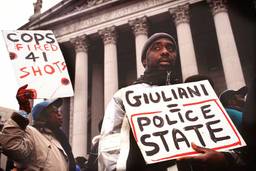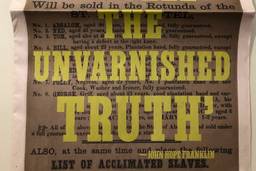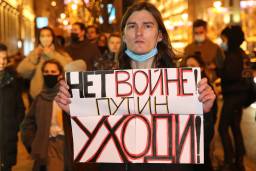Just as the threat of Iraqi weapons of mass destruction now seems a neocon-concocted mirage, word has begun leaking out about the spread of bioweapons far more threatening than anything in Saddam Hussein’s purported arsenal.
A two-part story in the Washington Post on April 20 and 21 revealed that biological agents developed by the South African government during its apartheid days have fallen into private hands. Written by Post reporters Joby Warrick and John Mintz, the piece noted that unique, race-specific strains of biotoxins were available on the world market — for the right price or the right ideology.
Wouter Basson, the man who directed South Africa’s clandestine bioweapons program, “spoke candidly [to federal officials] of global shopping sprees for pathogens and equipment, of plans for epidemics to be sown in black communities and of cigarettes and letters that were laced with anthrax.” The Post said Basson “revealed the development of a novel anthrax strain unknown to the U.S. officials, a kind of ‘stealth’ anthrax that Basson claimed could fool tests used to detect the disease.”
The top-secret program that Basson directed was called Project Coast, and it lasted from 1981 to 1993. The South African National Defense Force created it at a time when the white-minority regime was under increasing threat by indigenous black South Africans. Daan Goosen, the former director of Project Coast’s biological research division, told the Post he was ordered by Basson to develop ways “to suppress population growth among blacks” and to “search for a ‘black bomb,’ a biological weapon that would select targets based on skin color.”
Goosen and others involved with Project Coast have insisted, at least publicly, that Basson’s orders were never carried out. Researchers who have studied the issue are not so sure. According to a 2002 book by Chandré Gould and Peter Folb, Project Coast: Apartheid’s Chemical and Biological Weapons Programme, there has never been any serious outside scrutiny of the project’s products and “no records are available to confirm that the biological agents were destroyed.”
The Washington Post even noted, “Goosen says many scientists kept copies of organisms and documents in order to continue work on ‘dual-use’ projects with commercial as well as military applications.” A May 2002 story on Project Coast in the Wall Street Journal reported that Goosen said he has been “visited by scores of people looking for ‘stuff to kill the blacks.’” Race-specific weapons naturally are in hot demand among racists, so it’s no surprise that South Africa’s race-specific research is highly coveted.
In January 1999, the British Medical Association (BMA) began warning the world of the dangers of ethnic weapons. Although the report, “Biotechnology, Weapons and Humanity,” made no direct charge, it said the BMA could no longer ignore the varied reports that such weapons were currently being developed. The report concluded: “Weapons could theoretically be developed which affect particular versions of genes clustered in specific ethnic or family groups.” The possibilities of producing such weapons have been enhanced with the 2002 completion of the Human Genome Project.
The 1999 BMA study was provoked in part by a 1998 story in the London Sunday Times alleging that Israel already had developed a genetically specific weapon. “Unnamed South African sources,” according to a report cited by the Times, “[say] Israeli scientists have used some of the South African research in trying to develop an ‘ethnic bullet’ against Arabs.” Reported links between Israel’s ethnic weapons and South Africa’s Project Coast are tentative; some would say tenuous. But the possibility of such links is terrifying, and justifies as much scrutiny as was focused on Iraq’s imaginary arsenal.
It also appears that the anthrax incidents of 2001, in which five people died and 13 were sickened, may also have a South African connection. The Post noted that officials found evidence in a Frederick, Maryland, pond that may explain how the perpetrators of the deadly attacks used water to handle the lethal toxin without infecting themselves or loosing the anthrax spores.
On May 11, the Post said the water theory is the result of the FBI’s interest in one person, Steven J. Hatfill, a medical doctor and bioterrorism expert who formerly worked for the U.S. Army, and who lists South African diplomas in diving and underwater medicine on his résumé. A June 2002 article in the Hartford Courant reported that Hatfill also worked with a guerilla unit of the white-supremacist Rhodesian army from 1978 to 1980, when “an anthrax outbreak killed hundreds and sickened thousands of villagers.” He also lived in South Africa, “where he completed various military-medical assignments.”
Hatfill’s connections to South African and Rhodesian apartheid are much more apparent than his alleged link to the anthrax mailings. But the legacy of Project Coast blurs that distinction considerably.

I hope you found this article important. Before you leave, I want to ask you to consider supporting our work with a donation. In These Times needs readers like you to help sustain our mission. We don’t depend on—or want—corporate advertising or deep-pocketed billionaires to fund our journalism. We’re supported by you, the reader, so we can focus on covering the issues that matter most to the progressive movement without fear or compromise.
Our work isn’t hidden behind a paywall because of people like you who support our journalism. We want to keep it that way. If you value the work we do and the movements we cover, please consider donating to In These Times.
Salim Muwakkil is a senior editor of In These Times and host of “The Salim Muwakkil Show” on radio station WVON-AM in Chicago. Muwakkil was also contributing columnist for both the Chicago Sun-Times (1993 – 1997) and the Chicago Tribune (1998 – 2005). He is also a co-founder of Pacifica News’ network daily “Democracy Now” program and served as an adjunct professor at Northwestern University, University of Illinois, the Art Institute of Chicago and Chicago’s Columbia College.








